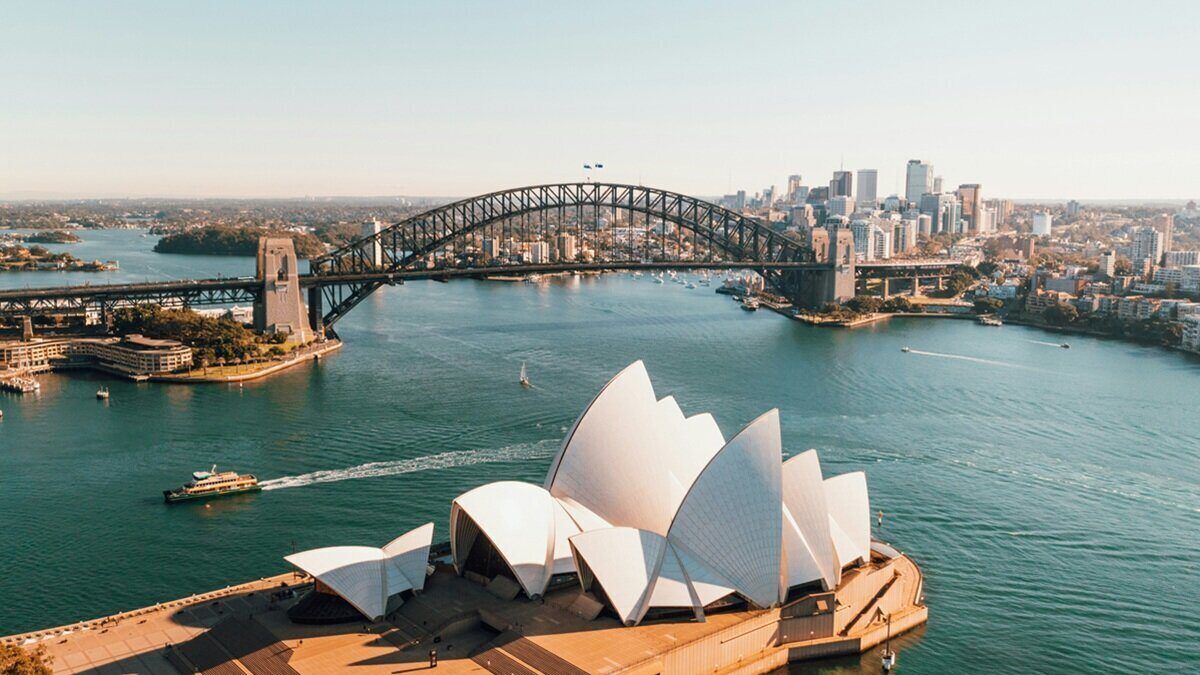It's arguably harder to buy property in New South Wales (NSW) than anywhere else in the nation. At least when you consider prices in the state's capital city.
Sydney isn't just the most expensive city in Australia, it consistently ranks among the most expensive places on Earth to enter the market.
Even property in regional NSW is significantly more expensive than that in many other parts of Australia.
For aspiring first home buyers facing Sydney's $1 million+ median house price, things can seem hopeless. Fortunately, there are a few government schemes that could offer a touch of support.
If you're looking to buy or build your first home in NSW, here's what you need to know about getting your hands on the state's First Home Owner Grant.
NSW First Home Owner Grant: What you need to know
The First Home Owner Grant is a state government scheme aimed at helping Aussies to buy or build their first home.
Eligible first home buyers can apply to have the NSW Government contribute $10,000 towards the purchase or construction of a newly built or house, townhouse, apartment, or unit.
The grant isn't available to first-time buyers purchasing a property that someone has previously lived in, unless it's been substantially renovated (i.e. most of the property has been removed or replaced).
First Home Owner Grant price limits
The NSW First Home Owner Grant isn't means-tested, meaning your eligibility isn't dependent on your wage being within a certain range.
However, there are price caps in place, limiting how much a buyer can spend on a property or land and still access the $10,000 grant:
| If you're | You'll be ineligible if your property is worth |
|---|---|
| Buying a newly built home | $600,000 or more |
| Building a new property | $750,000 or more (house and land included) |
First Home Owner Grant eligibility criteria
To be eligible for NSW's FHOG, you must:
-
Be at least 18 years old
-
Be buying as an individual or a couple, not as a company or a trust
-
Not have previously owned a home before 1 July 2000
-
Occupy the property purchased with the grant as your principal place of residence within 12 months of buying or construction finishing. Once you move in, you must live there for at least 12 months
-
Not have received a First Home Owner Grant in another state or territory
-
At least one applicant must be an Australian citizen or permanent resident
How to apply for the First Home Owner Grant
Applications for the NSW FHOG can be made either through Revenue NSW or your lender. If you need the grant before you can settle, you'll need to go through the lender giving you your home loan.
Applying for the First Home Owner Grant through a lender
If you want to apply for the grant through your lender, you'll need to borrow from an approved agent. These include many of the major banks and other financial institutions.
To apply for the grant, you'll need to fill out an application form and send through required documents. These might include:
-
A copy of the contract for sale or building contract
-
A title search showing the applicant as the owner
-
A statement from the vendor stating the property hasn't been occupied since the completion of the transaction
-
Evidence of the unencumbered land value
Applying through NSW Revenue.
You can also opt to apply directly through the NSW Revenue Office.
This can be done once you've completed the purchase of your home.
The application will need to be submitted within 12 months of either settlement or construction finishing.
Using the First Home Owner Grant as a deposit
If you apply for the First Home Owner Grant through your lender and you're successful, you'll receive the money straight away. That means it can go towards your deposit.
Given the grant is only $10,000, you might still need to supplement it with your own savings.
Most lenders require a deposit of at least 5% of the property value. If you're looking to avoid paying for Lenders Mortgage Insurance (LMI), which can amount to tens of thousands of dollars, the threshold is normally 20%.
NSW first home buyer stamp duty concessions
Stamp duty can be another barrier for first home buyers entering the market.
The First Home Buyers Assistance scheme (FHBAS) provides relief or even exemptions from stamp duty for eligible first home buyers.
Unlike the First Home Owner Grant, the FHBAS applies to the purchase of existing homes, as well as new homes and vacant land.
However, it also comes with price caps, as shown below:
Property value |
Exemption |
|
|---|---|---|
| New and existing homes | Equal to or under $800,000 | You can apply for a full exemption from transfer duty |
| Above $800,000 but less than $1 million | You can apply for a concessional transfer duty rate | |
| Vacant land | Equal to or less than $350,000 | You can apply for a full exemption from transfer duty |
| Above $350,000 but less than $450,000 | You can apply for a concessional transfer duty rate |
The NSW Revenue Office has an online calculator to help determine exactly how much you might be able to save with the scheme.
Other schemes and incentives NSW first home buyers can use
First Home Guarantee
The First Home Guarantee and the Regional First Home Guarantee are part of a federal government initiative aiming to help first home buyers enter the market, whereby the government essentially guarantors up to 15% of a property purchase.
Thanks to the extra layer of security, lenders will often waive the cost of LMI for buyers turning to the scheme, potentially saving them thousands.
Like the First Home Owner Grant, there are price caps dictating the properties that can be bought under the scheme. In Sydney, Newcastle, Illawarra, and Lake Macquarie, the cap is $900,000, while in the rest of the state it's $750,000.
There are several other eligibility criteria, including an income test for all applicants.
There are 35,000 spots available under the First Home Guarantee and 10,000 spots under for the Regional First Home Guarantee each year until at least 2026.
The First Home Super Saver Scheme
The First Home Super Saver Scheme (FHSSS) allows first home buyers to withdraw voluntary superannuation contributions and put the funds towards buying a home.
Super contributions are generally taxed at a lower rate to regular income, so it can be tax effective to use your superfund to save for a deposit and later withdraw your extra repayments under the FHSS.
You'll only be able to withdraw up to $15,000 of worth of contributions made in any single financial year, up to a total $50,000.
Help to Buy
If all goes to plan, the Help to Buy scheme will be another initiative to help low-income Aussies to home ownership.
The scheme, which is yet to launch, aims to go beyond providing a home loan guarantee.
Help to Buy will instead see the federal government make a potentially hefty contribution towards a first-time buyer's property purchase, up to 40% for new homes and 30% for existing homes. After that, the government will have an equivalent equity stake.
The buyer will then pay the contribution back over time or hand over a portion of the sale price, equivalent to the government's stake, when the property is sold.
As it stands there will be 10,000 places each year until 2029.
Frequently asked questions
Here are the answers to common questions first home buyers might have about the application process for the NSW First Home Owner Grant (FHOG).
Will my income impact my eligibility for FHOG?
The grant isn't means-tested. Eligibility largely depends on you being a first home buyer and the property your buying being within set price caps.
I own an investment property, will I be able to apply for the scheme?
If you have owned an interest in residential property since 1 July 2000 that has been solely used for investment purposes, you may be eligible for the grant on another property.
I have inherited a property. Do I still qualify for the FHOG?
You must be a buyer or a builder if you want to apply for the FHOG.
What will happen if I have to move out within the first 12 months?
If you move out before the mandatory 12 continuous months of residency, you may be required to repay the grant, as well as the stamp duty discount if you received it. Failing to repay the grant might result in a fine of up to $11,000 (which is more than the grant).
I'm buying a home with my partner. Will we both receive the grant?
The grant is limited to one per transaction. Two first home buyers involved in the purchase of a single property may be eligible for one grant between them.
I own property overseas. Can I still apply for the grant?
You will still be eligible for the grant if you own a property overseas, as long as you haven't owned property in Australia.
Looking to buy your first home in NSW? The table below features home loans with some of the lowest interest rates on the market for owner occupiers:
| Lender | Home Loan | Interest Rate | Comparison Rate* | Monthly Repayment | Repayment type | Rate Type | Offset | Redraw | Ongoing Fees | Upfront Fees | Max LVR | Lump Sum Repayment | Extra Repayments | Split Loan Option | Tags | Features | Link | Compare | Promoted Product | Disclosure |
|---|---|---|---|---|---|---|---|---|---|---|---|---|---|---|---|---|---|---|---|---|
5.29% p.a. | 5.33% p.a. | $2,773 | Principal & Interest | Variable | $0 | $530 | 90% |
| Promoted | Disclosure | ||||||||||
5.19% p.a. | 5.10% p.a. | $2,742 | Principal & Interest | Variable | $0 | $0 | 80% |
| Disclosure | |||||||||||
5.39% p.a. | 5.43% p.a. | $2,805 | Principal & Interest | Variable | $0 | $530 | 90% |
| Promoted | Disclosure |
Image by Caleb on Unsplash
Collections: First Home Buyer






Share